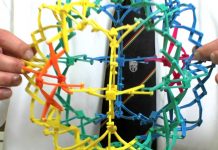When someone goes through intense trauma, whether it is you or a loved one you know, it can be very taxing on the mental health of the victim, over and above the physical pain that comes with it. Though many medical practitioners focus on the physical recovery part of the healing process, there is no doubt that simultaneously, mental and emotional healing needs to take place. In fact, studies suggest that a mentally stable person is able to heal better even physically as compared to someone who suffers from PTSD or another mental block.
A very useful and purposeful method of emotional therapy is something called Journey Therapy. According to GoodTherapy.org: “Journey Therapy is a process by which a person is guided to uncover suppressed memories that are responsible for creating problematic issues in the present day. By doing this, a person is liberated from the emotion that is tied to that memory. Healing begins when the negative emotion is released. In Journey Therapy, the therapist works with the client without direct physical contact, to supply him or her with the tools necessary to discover the memories within. Once this is achieved, the behaviors associated with the memories are identified and studied. The therapist and client work together to determine which patterns must be altered in order to affect positive change in the person’s life, health and relationships.
Unlike other modes of therapy, Journey Therapy does not involve any time-bound restrictions and sessions can continue for hours, as long as the patient is on the right track to discovering what is the real issue buried inside, they can come out of the trauma and obtain a more positive outlook to healing themselves. More than anything else, a person who has maybe met with an accident or other traumatic experience will at first want to push it away, live in denial or be in fear of life itself. However, when the person is coaxed and guided by a patient professional, he/she will begin to heal in a more positive way.
The most frightening thing about emotional trauma is that it cannot be touched nor seen, though it can be felt – though the pain is only limited to the victim. Though someone may put on a brave face for various reasons, the person going through the trauma will have to face their demons on their own. So, it actually should be an automated practice to take the patient to a psychological therapist along with their regular physical therapy sessions. Better yet, a physical therapist that is also trained with psychological disorders can assist the person in overall healing.








